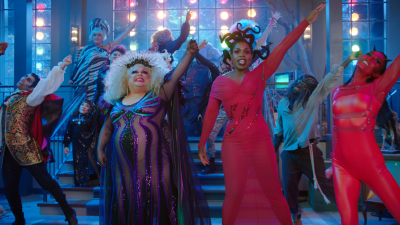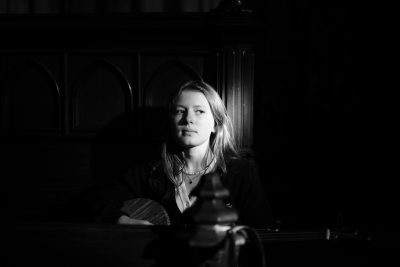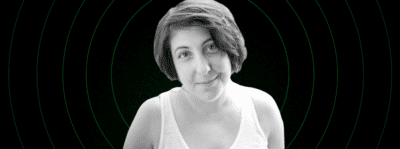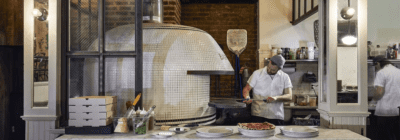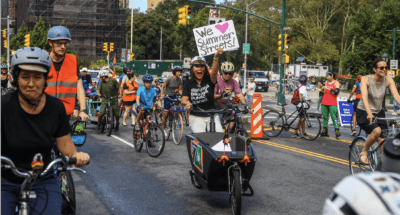Hidden herstory: New York’s lost lesbian love stories, explored in a new memoir
'Until very recently, no one set out to preserve queer stories,' writes Amelia Possanza in her debut memoir
Even though she writes about love, publicist and first-time author Amelia Possanza was actually driven to the page by an impulse to rant.
“I’m on this big queer swim team in New York City and one of my male teammates didn’t recognize me as a lesbian,” she said. “I was like ‘I’m on the gay swim team with you, why do you think I’m here?!’”
With a desire to be seen and understood, Possanza craved role models who’d navigated similar waters — queer women from days past who lived and loved in the same city she calls home. But who were they? And why were their histories — or “herstories” — so hard to come by?
“Stories were passed down through subterfuge, facts obscured by fiction,” she explains in “Lesbian Love Story: A Memoir In Archives.”
From lesbian activist and dancer Mabel Hampton to Olympic athlete Babe Didrikson to Chicana feminist scholar Gloria Anzaldua, Possanza delves deep into hazy accounts and scattered records, unearthing stories of lesbians who forged passionate relationships amidst broken systems and homophobic laws.
“I call myself a lesbian because I share their vision of love,” writes Possanza, who revives the dead with invented scenes intertwined with her own personal history.
As part of Pride Month and to promote her book, Possanza will be in Brooklyn on June 10 for a reading at the Books Are Magic Pride Fest.
Possanza sat down with Brooklyn Magazine to explain why certain queer histories vanish, and discuss seeking support in the living and the dead, what it means to be a lesbian and more.
This interview has been edited for concision and clarity.
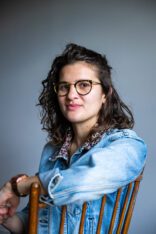
Possanza (Photo by Becca Farsace)
Why is lesbian history — and its love stories — so shrouded in mystery?
The dominant historical narrative is dictated by what produces historical records. If someone enlists in the army, there are battles the newspaper reports on. For a long time, only men were fighting in wars and taking government offices. And because of their economic status, women were confined, for the most part, to the home — to domestic spheres — which do not generate as many public records. To research the women I wrote about, I had to start with institutional records from hospitals and prisons that were not exactly concerned with documenting queer love.
I love how you contemplate historiography — how histories are recorded.
Our world is largely built on the historical narrative told by groups in power. But what would our world look like if it was inspired by the histories that we don’t really know, from the people who weren’t in power, who maybe weren’t even interested in power, or couldn’t have it?
How did your focus or understanding of lesbian history change throughout the writing of this book?
I started as a hopeless romantic — seeking love stories through a rom-com lens — and ended up as a political radical. Along the way, I discovered that all of these people were ostensibly lesbians but they were also marginalized in multiple ways and truly resisted that. It begs the question of what we do for each other when systems fail us.
It was wild to see society accept lesbian relationships through history only when labeling them platonic, with euphemisms like “smashing” and “Boston marriages.”
Sometimes my friends and I will talk about when the best time to be queer was. For a long time I foolishly thought it was now. But after writing the book I can see the pros and cons of every era. There was a pattern I began to notice around progress paired with moments when women possessed more economic power, like when women’s colleges were founded, and then during World World Two. This push-and-pull continues even now. There are legal wins some queer people have gained — like the right to marriage — but we’re still seeing pushback in insidious ways.
Some of the sexist and homophobic laws you cite from history — “masquerading as a man,” for example — feel eerily relevant in relation to current anti-trans and anti-drag legislation.
I finished writing this book about a year ago. After writing about all these terrible laws throughout history, there was a moment of extreme hope that we were trending in another direction. But that was a naive hope. What’s interesting about the masquerade law you’re talking about, or old prostitution laws, was that police could arrest anyone seen as not doing the “proper” thing. The way to crack down on what people were offended by — gay sex and partnership — was to focus on what people wore. It was also a way to remove people who defied norms from society. And a similar thing is happening now.
If you had written this book a year later, in a more hostile climate, do you think it would read differently?
I might have stated the political more explicitly.
How so?
Well, I really love this Cherrie Moraga quote from “The Bridge Called My Back”: “We need political memory so we are not always imagining ourselves the ever-inventors of our revolution.” Sometimes we think we’re the first ones facing these issues because we are disconnected, sometimes intentionally, from the histories of people who faced similar struggles before us. Marginalized groups are often forced to name themselves to be granted access to certain rights. We have the word “lesbian,” which some people today hate and some embrace. It connects you to other people with similar identities, which is wonderful, but if all marginalized groups are asked to petition the government for their rights, we’re going to keep splintering off into more and more groups instead of saying, “We’re all human and we all need rights.”
Isn’t archival research an antidote to this issue? I love the book’s theme of seeking help not just from the living, but also from the dead.
Yeah, that was one of Mabel Hampton’s lines.
What was your experience in reviving the deceased in this way?
Honestly, it’s just so nice that more people know my dead friends! I think writing this book was my way of recreating a queer community for myself during the pandemic when I couldn’t go to places like Ginger’s on 5th Avenue in Park Slope.
You mention falling in love with some of these historical figures. Was Mary Casal your major heart throb?
I think so. Especially when she said she’d rather woo than be wooed — that really got me. There’s a certain safety to falling in love with historical figures. I’m less destined to get hurt. A certain amount of love is also necessary to keep these stories alive. For Mabel, the predominant love story is about her and her partner of over 40 years, Lillian Foster. But there’s also a beautiful love that emerges between Mabel and her interviewer Joan Nestle. Joan’s mother had originally hired Mabel as a domestic worker years prior and they remained friends until the end of Mabel’s life when Joan stepped in to take care of her and document her life.
Why did you decide to focus on lesbians based solely in New York City?
It’s where I live — a definite bias — but I was also thinking about liberal places. Mary Casal lived in Massachusetts, but it’s here in New York where she met a community of other queer people and realized she wasn’t the only lesbian on earth.
A lot of these people were in different cities at different points, but New York became the place to connect or to stay and experiment with how one could live their life, get a job and a home without a husband.
Did the city’s history open up to you in any surprising ways?
I see the city so differently now. Because I wasn’t able to travel anywhere else during the pandemic, I focused on whatever remnants I could find in New York.
Like what?
Well, with hidden histories there’s no big plaque that reads, “Mabel Hampton lived here with her partner Lillian.” But you can still find those places if you know where to look. If I go past St. Raymond Cemetery where Mabel is buried I get this feeling that she’s right there. I also love going to Brighton Beach and Coney Island. Knowing it’s a place Mabel went makes me happy.
Each chapter focuses on a different lesbian love story based in 20th century New York, except the chapter on the archaic Greek poet Sappho.
I wanted to go straight to the source: Sappho, who gave us the word lesbian by way of the island Lesbos, where she lived. I quickly became fascinated by how little we know about Sappho, even though so much has been made of the myth. If historians and classicists — who, again, have mostly been men — were making up stories about her, what’s stopping me? I also asked myself, how has our world been shaped by what’s been recorded and preserved? Sappho influenced my linguistic study of the word lesbian. What has it meant? What could it mean?
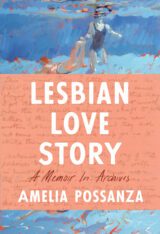

I didn’t start out to be an authority. I wanted to show my own ideas change as I went along. For me, part of my own personal definition of lesbian was that there’s no authority in general, we all decide for ourselves.
Do you think the figures in your book would all agree with being called lesbians?
Of the seven central figures in the book, almost all of them use the word “lesbian” to self-subscribe at some point, but I think if you presented them with all the choices around gender and sexuality we have today they could identify differently.
What prompted you to use memoir and fiction in telling these stories alongside your own?
There were so many forces holding them back from talking openly about their sex lives when they were alive. I wanted to encapsulate scenes in these lesbians’ lives. In choosing which seven figures to write about, there was also a lot of unconscious bias. None of them are high-femme lesbians; they are all pretty masculine and androgynous. There are also no trans women or Indigenous women — I subconsciously gravitated toward people more like me. But I didn’t want this book to be the stand-in for all of lesbian history, so I needed to tell readers who I am and why these particular figures interest me. There are so many more of these stories to be told and I want other people to go out and do it.
You might also like 

















